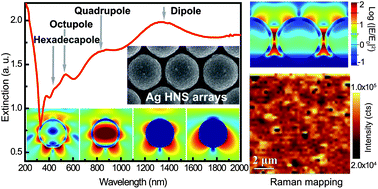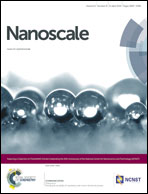Multipole plasmon resonances in self-assembled metal hollow-nanospheres
Abstract
Recently, multipole plasmonic mode resonances in metal hollow structures, such as dipole, quadrupole, and octupole modes, have been widely investigated by researchers with the aim for potential applications in bio-sensing, fluorescence, nanolasers or nonlinear nano-photonics. Here, in this work, the multipole plasmon resonances in self-assembled metal hollow-nanospheres (HNSs) are theoretically and experimentally demonstrated and the hot spots originating from the higher order mode plasmonic resonance and interparticle coupling effect are proposed to be used for Raman scattering enhancements. Dipole, quadrupole, octupole and hexadecapole mode plasmonic resonances were clearly resolved in the extinction spectra of these Ag HNS arrays showing good agreement with the theoretical simulation results. Strong regular hot spots were obtained around the surface and in the gaps of the Ag HNSs through the higher order mode plasmonic resonances and corresponding interparticle coupling effect between the HNSs. Maximum local field intensity was accomplished by optimizing the size of as well as the coupling distance between the HNSs and then it was applied to SERS sensing. Raman mapping also demonstrated these self-assembled plasmonic cavity arrays to be a stable and uniform SERS-active substrate.

- This article is part of the themed collection: ChinaNANO

 Please wait while we load your content...
Please wait while we load your content...